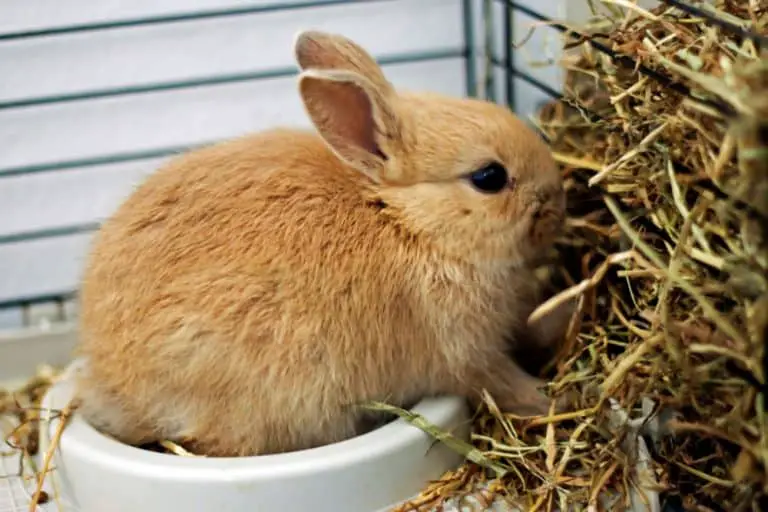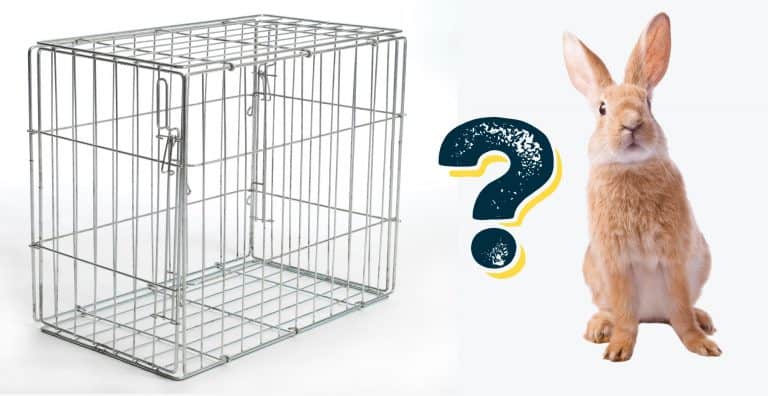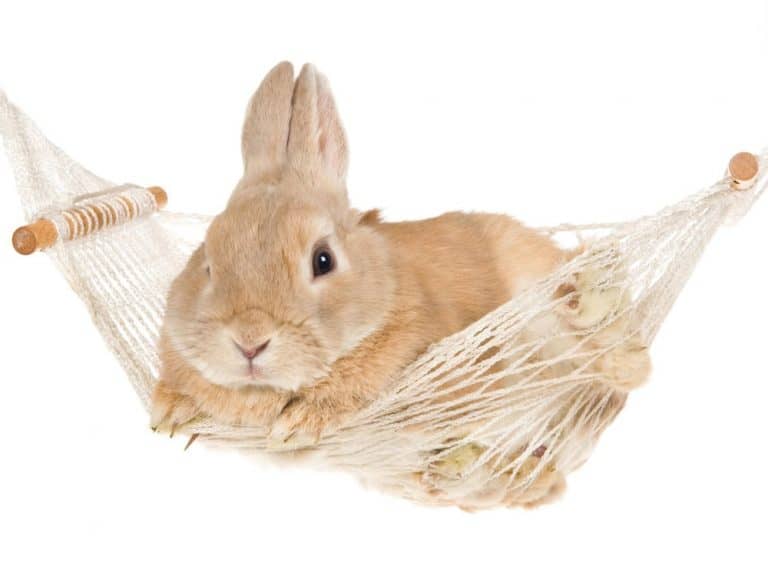Can A Rabbit Live With 3 Legs?
We do everything to keep our furry bunnies safe. We try to eliminate dangers and care for their every need. But, sometimes, accidents do happen. It is not uncommon that in the event of an accident, a vet may turn to amputation. This can be a hard decision for you. You may be wondering can a rabbit live with 3 legs comfortably. There are many factors to consider, including how well they do and how to care for them after. If you came here for some reassurance, hopefully, we can help guide you.
Can A Rabbit Live With 3 Legs?
To relieve any fears from the beginning, the answer is that yes, many rabbits have lived fruitful lives with just three legs. We might view rabbits as a quiet and fragile creature. But they are surprisingly adaptable. If they are young, they usually bounce back quickly. Older rabbits might have a longer recovery time, but they still manage to do just fine. If your rabbit is healthy in every other aspect, they should live happily with three legs.
But life will never go back to normal for either of you. You and your rabbit will have to make a few changes to have the best chances of survival.

Causes For Leg Amputation
A common question that owners have during this decision is if amputation is necessary. If you aren’t entirely sure of your vet, and their knowledge on rabbits, this can be concerning. But leg amputation is very common in a lot of small animals, not just rabbits. There are many reasons your vet might lean towards amputation.
- Broken legs are tough to splint. In many cases, your rabbit will re-injure themselves, causing more extensive problems. If your rabbit has another accident, it could lead to amputation anyway.
- The fracture is too severe for a splinting option. In some cases, the bone is not just fractured but shattered. Your rabbit will do better with amputation than having nuts and bolts that can be uncomfortable. These nuts and bolts also come loose so that you will be looking at multiple surgeries.
- If your rabbit has cancer or an injury that is severely infected, your vet may opt for amputation. This kind of amputation is to prevent the disease from spreading throughout the body.
- And finally, if your rabbit was born with a mutation, it is more humane to amputate. Removing the leg can save unnecessary infections and uncleanliness in a limb that has no movement.
Amputations are considered very low-risk surgery. If your rabbit is healthy, they pull through the operation in no time and are back to their antics. But you might want to prepare for a few adjustments.
Amputee Cage Adjustments
The most significant part of bringing home your amputee is making life adjustments. Although a rabbit can live with three legs, it does not mean life as usual. You and your rabbit both will need to adjust to it. Your rabbit will need to learn how to walk and play again, and you will have some added tasks. Not to mention major adjustments to their cage to make it safe for them.
Separation
If you have more than one rabbit, the first thing you need to do is set up a separate cage for your amputee. While your rabbit is recovering, they need to have some peace and no extra stress. Your other rabbits will be too curious as to what is going on. Some might try to lick the fresh wounds to “help,” but they will end up causing infections.
Separating will be a temporary thing if your rabbit adjusts well. Once your rabbit’s leg has healed, you can start doing short playtimes with the others. You will know that your rabbit is ready for these playtimes when there is no scabbing, and your rabbit seems to have gotten the hang of balancing. Remember to start slow and in small areas. Chances are your rabbits have missed each other and will be overly excited to see their friend.
Once your rabbit has made a complete recovery, you can add them back to the rest of your colony. But you will have to make changes to the cage for everyone, but more info on that below.
Replace Bedding
Most flooring can be very slippery, and loose bedding can crumble and fall under your rabbit’s feet. The first thing you will want to do is replace any bedding that you have with something more comfortable. This rule goes for their temporary cage and their permanent pen with others. Many owners have great luck with using fleece as a cage liner since fleece is washable and wicks away any wetness. You might even put something like reusable pee pads under the fleece to help with padding and absorbency. We love these Pet Parents Pawtect Pads because they are super affordable, come in many sizes, and are no-slip. You can even use a smaller size directly in their litter box.
Remove Ramps or Stairs
While your bunny is recuperating, it is best to keep them in a smaller cage to prevent them from overexerting. This smaller cage needs to be one level with no ramps or stairs. Once your rabbit has recovered and moves back in with the rest, you will need to prevent future falls. Even though your rabbit seems back to normal, they are more likely to fall from high places. They will forget their limits and try to do things the others are doing. So it is best to keep all your rabbits in a single-story cage.
Leaning Objects
You will also want to add a few things for your rabbit to lean on. It will be hard for them to support their weight while eating, drinking, and going to the bathroom. Having stuffed animals or rolled-up towels in their cages will give them something to rest on. You will want to put one near their food and drink and inside their litter box. Once your rabbit is back with their siblings, they might lean on others for rest, but having support while eating and going in the litter will still be needed.
Lower Litter Box
The next thing you will want to change is your rabbit’s litter box. Since your newly three-legged bunny will have some balance issues, they need a lower litter box. We recommend the Table-Top Gardener Portable Potting Tray since it is a perfect size and a low opening.
You will also want to change the type of litter that you use. Using a potty pad like mentioned above is excellent for absorbency and reusable. Pelleted and loose litters shift too much and can cause your rabbit to become unstable. And you will need to have a rolled-up towel or piece of fleece around the edges to help prop your rabbit up. Propping is especially important to reduce the amount of urine and feces that get on your rabbit.
Comfortable Beds
Some three-legged rabbits find it hard to get comfortable while sleeping. To make them as comfortable as possible, we recommend using a bed with high sides so they can lean against the sides. The mattress will not only help them sleep but getting up too. Your rabbit will use the side of the bed to push themselves up with their body now that they don’t have a leg. The FurHaven Oval Cuddler Nest is perfect because of its low entry and soft lining.
Lower Food & Water Bowls
If you have high sitting food and water dishes, you will also need to replace them so that your rabbit can have better access. Hay feeders will need to have lower openings that don’t require your rabbit to stand up or are placed lower to the ground. If your rabbit is used to a water bottle, you will need to lower it. Otherwise, you can use bowls like these Durapet Stainless Steel Cat Dishes for food and water.
Wheel-Chair For Exercise
With a veterinarian’s guidance, you might consider getting a rabbit wheel-chair for exercising. A wheel-chair is not to be used all the time, but it can have significant benefits for exercising. A wheel-chair can allow your rabbit to run at their full capacity again. It also gives them a good stretch without worrying too much about falling. But not all rabbits take to wheel-chairs well. Only your veterinarian will be able to provide you with honest insight into your situation.

Adjustments For You
Your rabbit isn’t the only one who will have to make adjustments. You will also have to do a few things differently to keep your rabbit healthy and strong. These are minor adjustments considering the situation. They mainly take a little more planning and a few extra minutes a day to keep your bunny healthy.
Ear Cleaning
The biggest issue that rabbits have once they lose a leg is grooming. You will have to be sure that you are regularly cleaning your rabbit’s ear on the side of the missing limb. You can clean your rabbit’s ears with cotton swabs or balls. Dampen the cotton and wipe it gently on all areas that you can immediately see. Make sure never to insert a cotton swab down the ear canal as this can lead to injury. You can even buy a cleaning solution like he Oxyfresh Pet Ear Cleaner for hardened wax. Cleaning should be done frequently any time you can visibly see wax. And always make sure to dry the ears completely.
Scratches And Massages
Since your rabbit doesn’t have a foot to scratch with, you will want to do this for them several times a day. Giving a good scratch and massage all over the side of the body with a missing foot feels excellent to them. They love the scratches behind the ears and side of the face the most. And giving them a good massage all over will help loosen up their muscles. These massages will help with blood circulation, stiffness, and stretching their muscles. If you really want to go the extra mile, some vets can provide acupuncture for your bunny as well.
Spot Cleaning
It is essential to spot clean your cage daily, even twice daily, to ensure that your rabbit stays clean. More importantly, you will need to spot clean your rabbit too. Rabbits with three legs can have some difficulty going to the bathroom. They also can’t clean themselves as easily anymore. So to solve this problem, you will want to take an unscented baby wipe with a water base to clean your rabbit’s rear daily.
Dry Baths
Sometimes your rabbit will get dried poop and hay stuck to them. No amount of effort will ever prevent them from ever getting dirty. They also will have accidents with food and water that are inevitable. In between bathing, you might want to try dry baths. Dry baths are only using cornstarch in areas that are soiled to soak up moisture and release the dirt. After rubbing the cornstarch into their fur, you will then use a comb to help work it all out. Then finish by toweling them off.
Baths
Healthy rabbits rarely ever need a full bath. But bunnies with three legs will need them more often in a safe environment. You might find that only washing the bottom is necessary, and other times a full-body bath needs to be done. When washing your bunny, never fill the tub more than a few inches, and always use a pet-safe shampoo. We love this J·R·LIGGETT’S Pet Shampoo because it is organic and has no harsh detergents. No detergents mean that it is safe to use more often and won’t harm your rabbit’s delicate skin. And don’t forget to dry your rabbit off completely to keep them from getting cold.
It should be noted that if you have other rabbits cohabitating with your amputee, you may notice a shared responsibility. Rabbits naturally will take care of each other with grooming and comfort. You may see that your other rabbits will groom any problem areas while you are away, including dried poop or waxy ears. This is the beauty of having a colony where everyone works together.
What To Watch For
With everything that we go through to make our bunnies comfortable, it doesn’t seem likely that they should ever be distressed. But, rabbits usually don’t show signs that something is wrong until it’s too late. It will be your job to make sure to do a thorough check daily for their health. But what do you check for, and when do you know it’s time for a vet?
Unusual Behaviors
The biggest thing you need to watch for is your rabbit’s behaviors. Does he seem grumpier or more aggressive than usual? This could be a sign of pain. Has she stopped eating and pooping as much? She might have pain or an infection. Do you find your rabbit sleeping a lot and not trying to move around? This could be a sign that something serious is wrong. If you ever notice any of these things, you should take your rabbit to the vet immediately.
Sores
You will also need to check for sores where the leg was amputated and on all supporting legs. Some rabbits end up dragging their amputated stub for a little while, and that can create wounds. These sores get infected quickly with urine and feces. The rest of their feet might start developing ulcers as well from supporting weight unevenly. Daily examinations should be done for the rest of your rabbit’s life. They may never get sores, but if they do, you should take them to your trusted vet for antibiotics.
Maintaining Weight
A three-legged rabbit must maintain a healthy weight. It is all too easy for them to become lazy and gain too much. The more weight they gain, the harder it will be for them to move around. You should exercise your rabbit daily and doing a weigh-in every month. Weigh-ins will help you stay on track before it gets out of control.
Arthritis
As your rabbit gets older, they become more prone to arthritis. For rabbits with a missing leg, this is especially true. They will tend to develop it quicker than other breeds. Some arthritis can be managed with diet and exercise, but some will require daily pain medication to control it. The best you can do to prevent this is to keep your rabbit active and a balanced diet. Talk with your vet if you have concerns about arthritis and never start over the counter supplements before a consultation.
Spine Curvature
One of the most common issues with three-legged rabbits is spine curvature. Curvature happens because of the uneven weight distribution and adaptations for moving around. To keep this from happening, we recommend semi-annual vet check-ups to keep a close watch for any changes. And giving your rabbit some adequate exercise outside of the cage daily. Even a good back massage daily can help stretch out their spines and relax their muscles.
Conclusion
So can a rabbit live with three legs? Yes, with a little support from us, they can live long and happy lives. They will learn to walk again just fine, and with minor adjustments, you may forget that they have lost a leg. Your other rabbits will welcome back their friend once they have healed, and everything can go back to normal.
Related Questions
Can a rabbit’s broken leg heal on its own?
It will always depend on the situation. However, an x-ray is really the only sure way to see where the break is and how severe it is. If you suspect that your rabbit’s leg is broken, you need to consult with your exotic veterinarian as soon as possible. Limiting the rabbit’s space to a small cage or pet carrier until the vet can see your pet would be best.
How do you treat splay leg in rabbits?
Splay legs is a musculoskeletal condition that is typically genetically based. There is no cure for splay legs, but if found young, an experienced vet can advise on the use of braces. There are instances of rabbits with splay legs living quite well, like normal rabbits.







